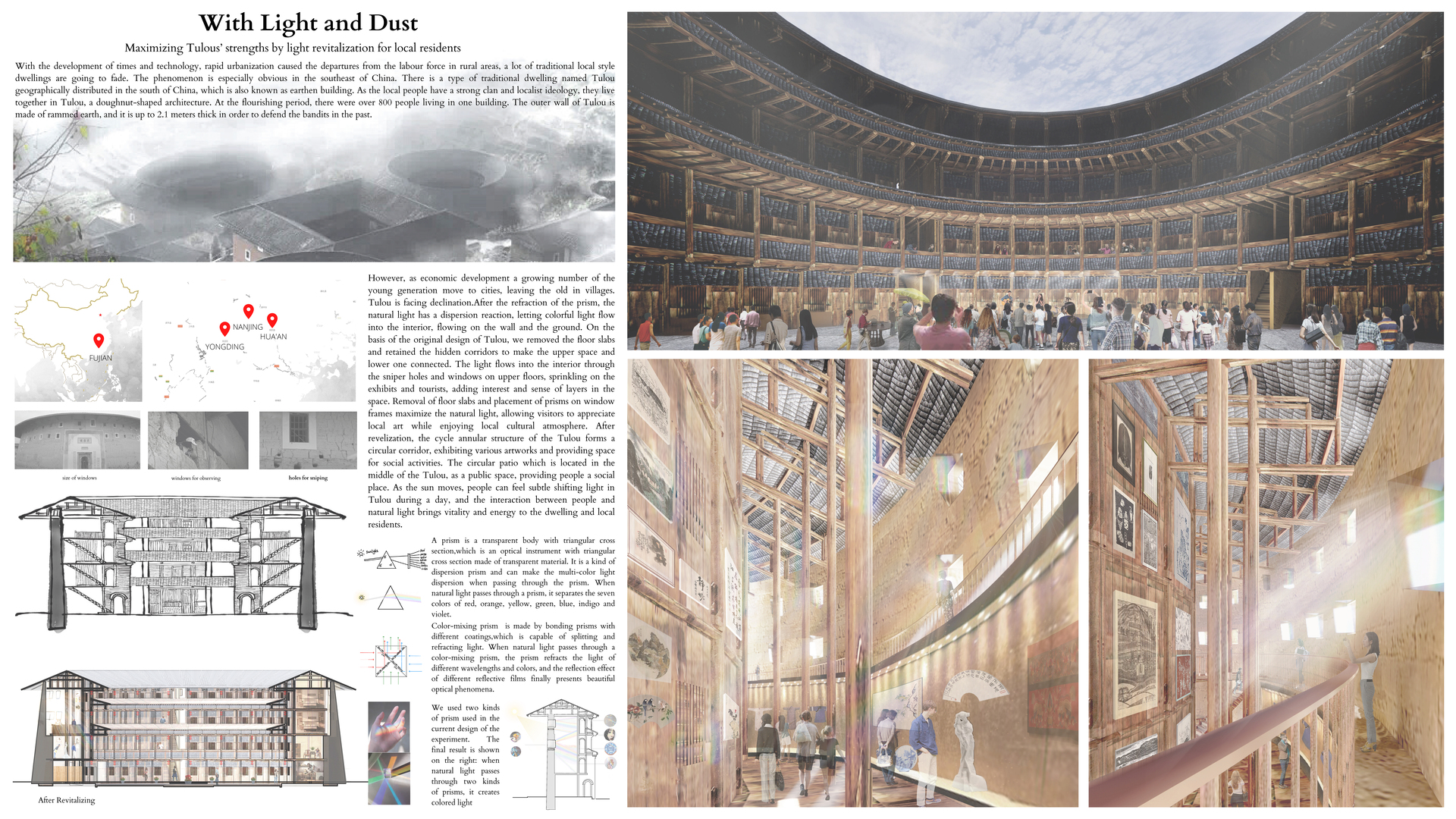Project Description
With the development of times and technology, rapid urbanization caused the departures from the labour force in rural areas, a lot of traditional local style dwellings are going to fade. The phenomenon is especially obvious in the southeast of China. There is a type of traditional dwelling named Tulou geographically distributed in the south of China, which is also known as earthen building. As the local people have a strong clan and localist ideology, they live together in Tulou, a doughnut-shaped architecture. At the flourishing period, there were over 800 people living in one building. The outer wall of Tulou is made of rammed earth, and it is up to 2.1 meters thick in order to defend the bandits in the past. However, as economic development a growing number of the young generation move to cities, leaving the old in villages. Tulou is facing declination. After the refraction of the prism, the natural light has a dispersion reaction, letting colorful light flow into the interior, flowing on the wall and the ground. On the basis of the original design of Tulou, we removed the floor slabs and retained the hidden corridors to make the upper space and lower one connected. The light flows into the interior through the sniper holes and windows on upper floors, sprinkling on the exhibits and tourists, adding interest and sense of layers in the space. Removal of floor slabs and placement of prisms on window frames maximize the natural light, allowing visitors to appreciate local art while enjoying local cultural atmosphere. After revelization, the cycle annular structure of the Tulou forms a circular corridor, exhibiting various artworks and providing space for social activities. The circular patio which is located in the middle of the Tulou, as a public space, providing people a social place. As the sun moves, people can feel subtle shifting light in Tulou during a day, and the interaction between people and natural light brings vitality and energy to the dwelling and local residents.
